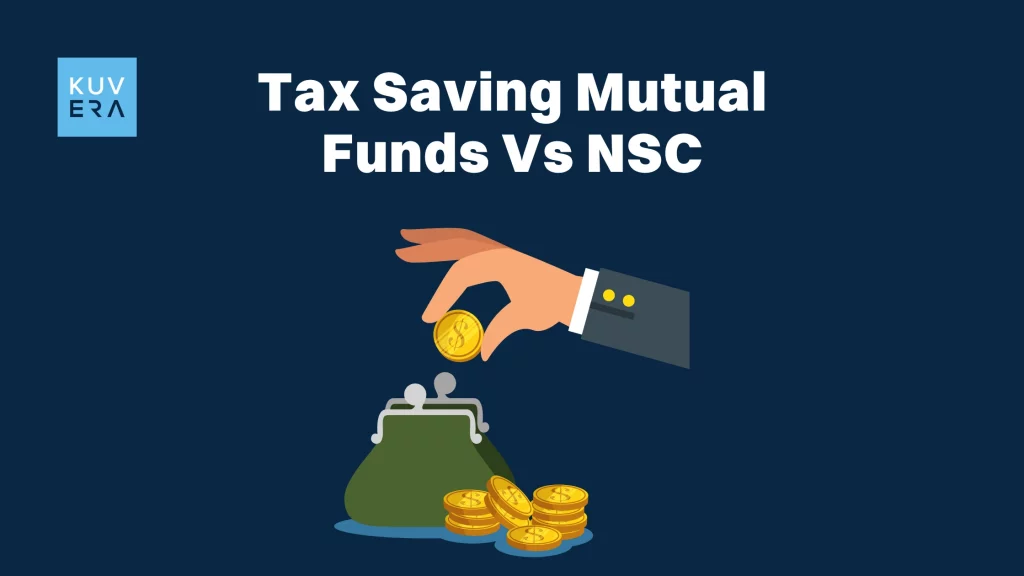Investing wisely is the key to achieving financial stability and long-term wealth creation. In India, tax-saving investments play a crucial role in financial planning, and two popular options under Section 80C of the Income Tax Act are the Equity-Linked Savings Scheme (ELSS) and the National Savings Certificate (NSC). While both offer tax benefits, ELSS is the most preferred choice of investors aiming at financial growth, seeking flexibility, and tax efficiency.
Let’s do a comparative analysis of these two investment options, to arrive at the best choice:
The Tale of Two Paths: Your Investment Journey
Imagine standing at a crossroads in your financial journey; you have two paths ahead. One path leads through a vibrant, dynamic forest, full of opportunities and growth, while the other follows a steady, well-paved road that offers stability and assurance. Both roads promise to take you to your goal, i.e., building wealth while saving on taxes.
ELSS: The Thriving Forest
You decide to explore the lush forest. The trail is exciting, with trees growing rapidly, birds chirping with optimism, and streams flowing with energy. Similar could be the world of Equity-Linked Savings Schemes (ELSS), an investment avenue where your money is linked to the stock market.
Here, the potential for growth is immense. With higher returns, you feel the thrill of seeing your investments flourish, but you also realise that the journey is not without its ups and downs. Fortunately, you have a shorter lock-in period of just three years, giving you flexibility if you need to exit early.
NSC: The Steady Road
On the other hand, you see your friend choosing the smooth, paved road, the National Savings Certificate (NSC). This path is predictable and secure, with clear milestones along the way. Each step guarantees a fixed return, offering a sense of comfort and certainty.
With NSC, you know exactly how much you’ll receive at the journey’s end. The government backs this road, ensuring zero market risk and guaranteed returns. However, the pace is slower than the forest trail, and your money stays locked in for five years, slightly longer than ELSS.
Before investing in ELSS or NSC, note the following factors:
1. Returns Potential
The ELSS is an equity-linked scheme; it has the potential to provide better returns than any fixed-income asset. Historically, ELSS has delivered an average return of around 12-16% p.a., making it an attractive option for wealth creation.
On the other hand, the National Savings Certificate (NSC) is a government-backed investment scheme that offers guaranteed returns in combination with tax savings. The interest rate on NSC is revised by the government every quarter, which may be around 7%-8% p.a., which, while stable, often fails to outpace inflation.
2. Lock-in Period
ELSS has the shortest lock-in period of 3 years, allowing quicker liquidity. The maturity happens in FIFO (First In First Out) pattern when invested through a Systematic Investment Plan (SIP) whereas the NSC has a longer lock-in period of 5 years, reducing investment flexibility.
3. Tax Treatment
The ELSS investments qualify for tax deductions under Section 80C, with long-term capital gains (LTCG) over Rs. 1 lakh taxed at 10%, and the NSC interest earned is taxable, but it can be reinvested to avail further deductions.
4. Risk and Suitability
The ELSS investments are market-linked, with higher risk and higher return potential, whereas the NSC being a government-backed investment, ensures capital protection with guaranteed returns.
5. Liquidity Needs
Further, the ELSS offers better liquidity with a shorter lock-in period and the provision for partial redemptions. However, the NSC funds are locked in for five years with limited withdrawal options.
6. Investment Goals
The ELSS can be suitable for long-term wealth accumulation and tax-saving with market exposure in comparison to the NSC, which might be suitable for risk-averse investors looking for assured returns with government backing.
Calculation of ELSS
Let us assume an investment amount of ₹1,50,000, which is the maximum deduction allowed under Section 80C, and compare the growth over their respective lock-in periods of the ELSS and the NSC.
Case 1: ELSS Calculation (3 Years at 12% CAGR)
Formula:
After 3 years, the value of your ELSS investment grows to ₹2,10,735, providing a gain of ₹60,735, with no tax if LTCG is within limits.
Case 2: NSC Calculation (5 Years at 7% p.a.)
Formula:
After 5 years, the NSC investment grows to ₹2,10,390, providing a gain of ₹60,390.
Tax Implication:
- ELSS: No tax up to Rs. 1 lakh.
- NSC: Interest is fully taxable. If taxed at 30%, the net gain reduces to ₹42,273.
Summary
| Aspect | ELSS (3 Years) | NSC (5 Years) |
|---|---|---|
| Investment | ₹1,50,000 | ₹1,50,000 |
| Interest Rate | 12% (market-linked) | 7% (fixed) |
| Maturity Value | ₹2,10,735 | ₹2,10,390 |
| Lock-in Period | 3 years | 5 years |
| Taxability | LTCG over ₹1 lakh taxed @10% | Fully taxable |
| Net Gain | ₹60,735 (Tax-Free) | ₹42,273 (After Tax) |
Why You May Choose ELSS Over NSC?
- Higher Returns Potential: ELSS can offer inflation-beating potential returns compared to NSC.
- Shorter Lock-in Period: ELSS can provide greater liquidity within 3 years.
- Tax Efficiency: Gains from ELSS up to Rs. 1 lakh in ELSS are tax-free.
- Wealth Creation: ELSS might benefit from equity market growth potential and might outperform traditional savings.
Expert Opinions on Choosing Between ELSS and NSC
- Radhika Gupta, CEO of Edelweiss AMC: “ELSS is a fantastic way to combine tax-saving with wealth creation. For young investors with a long-term horizon, ELSS offers inflation-beating returns compared to traditional fixed-income options like NSC.”
- Balwant Jain, Tax and Investment Expert: “While NSC provides guaranteed returns, its taxable nature diminishes its effectiveness. ELSS, with its tax-efficient growth and shorter lock-in period, is a more suitable choice for risk-tolerant investors.”
- Gaurav Mashruwala, Financial Planner: “If your goal is wealth accumulation with tax benefits, ELSS is the way to go. NSC works better for conservative investors who prioritise safety over growth.”
You may start your ELSS investment journey with Kuvera. Following is the list of top 5 ELSS schemes with their respective 3 years returns and corresponding total expense ratio (TER).
| S. no. | Scheme | 3 Yr Return | TER |
|---|---|---|---|
| 1 | SBI Long Term Equity Growth Direct Plan | 23.11% | 0.95% |
| 2 | IDBI Equity Advantage Growth Direct Plan | 22.30% | 1.21% |
| 3 | Motilal Oswal ELSS Tax Saver Growth Direct Plan | 21.77% | 0.64% |
| 4 | HDFC ELSS Tax Saver Growth Direct Plan | 20.71% | 1.11% |
| 5 | ITI ELSS Tax Saver Growth Direct Plan | 18.49% | 0.57% |
Source: Kuvera, 23 January, 2025
Wrapping Up
Both ELSS and NSC can serve different purposes, but if you seek higher returns, tax efficiency, and flexibility, ELSS might be a better choice. While NSC can offer stability, its fixed returns and longer lock-in period might make it less attractive compared to ELSS for wealth creation. Investing in ELSS can allow you to leverage the power of compounding and market growth to achieve your financial goals efficiently. You can start your investment journey today and by choosing ELSS to pave the way for a prosperous financial future!
Interested in how we think about the markets?
Read more: Zen And The Art Of Investing
Watch here: Rebalancing for Mutual Fund Investors

